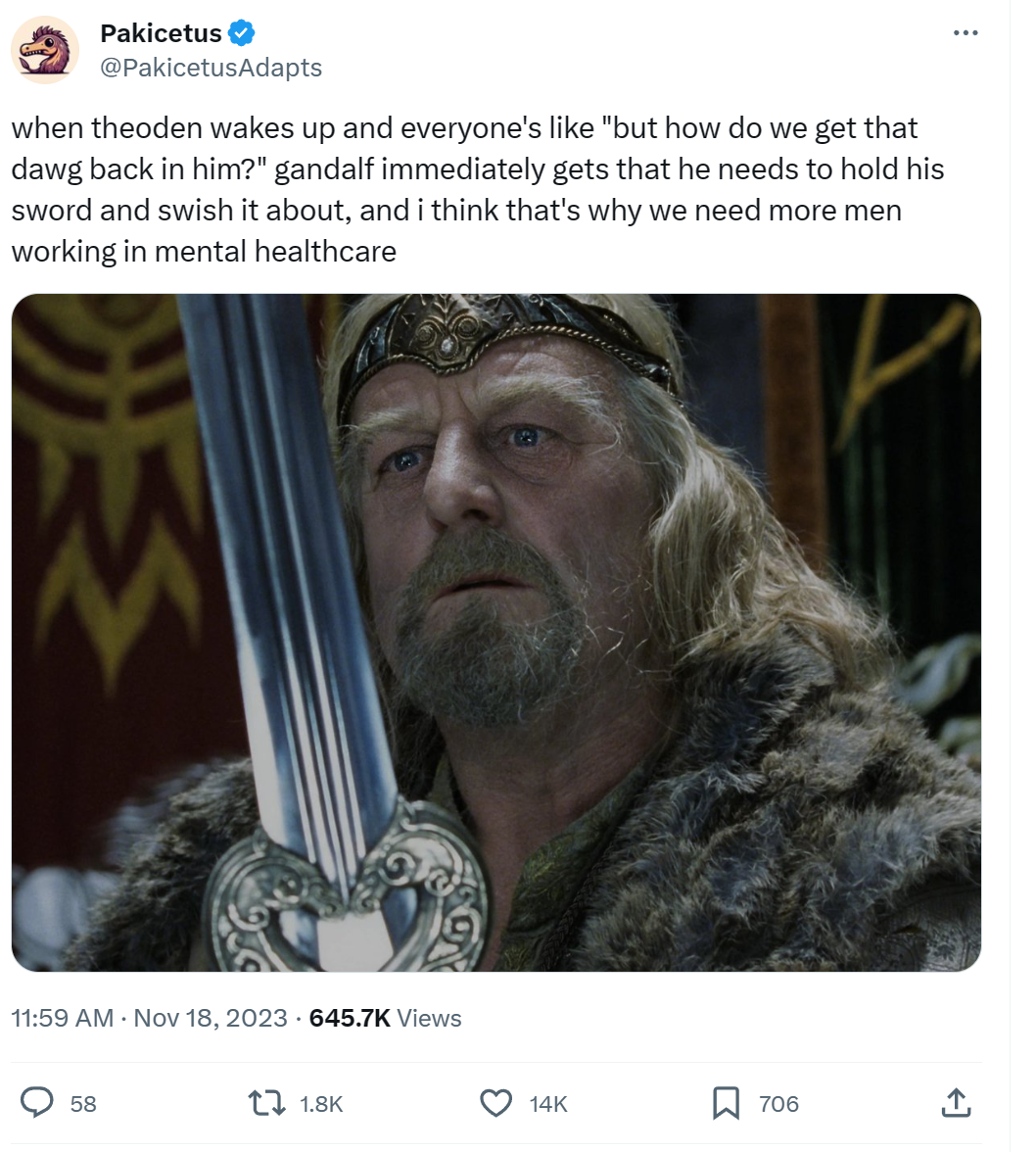this post was submitted on 22 Apr 2024
457 points (99.8% liked)
196
17133 readers
3053 users here now
Be sure to follow the rule before you head out.
Rule: You must post before you leave.
Other rules
Behavior rules:
- No bigotry (transphobia, racism, etc…)
- No genocide denial
- No support for authoritarian behaviour (incl. Tankies)
- No namecalling
- Accounts from lemmygrad.ml, threads.net, or hexbear.net are held to higher standards
- Other things seen as cleary bad
Posting rules:
- No AI generated content (DALL-E etc…)
- No advertisements
- No gore / violence
- Mutual aid posts require verification from the mods first
NSFW: NSFW content is permitted but it must be tagged and have content warnings. Anything that doesn't adhere to this will be removed. Content warnings should be added like: [penis], [explicit description of sex]. Non-sexualized breasts of any gender are not considered inappropriate and therefore do not need to be blurred/tagged.
If you have any questions, feel free to contact us on our matrix channel or email.
Other 196's:
founded 2 years ago
MODERATORS
you are viewing a single comment's thread
view the rest of the comments
view the rest of the comments

Unless that's just the nearest analog they had to describe the relationship?
Well, she married the elf-king, and had a daughter with him. Don't know what would be more direct.
So that tells us they can at least take the required form, but doesn't tell us they are necessarily fixed to it?
I know nothing about this lore so I'm really just fishing for someone with more knowledge to give definitive answers based on the literature.
https://tolkiengateway.net/wiki/Ainur
The Ainur comprise of the Valar (godlike/archangel entities such as Morgoth, Manwe, Ulmo) and the Maiar (less powerful, notables include: Gandalf, Sauron, Saruman, Melian, all Balrogs). So this information should apply to both groups.
Excellent thank you. Cited on the wiki too - neat.
So I take this as an affirmative to my original suspicion - given they can change form at will, they could be any sex they like today, tomorrow and then be a tree the day after I guess? So they do just use the analog to represent themselves, as their existence is not constrained by such biological limitations like "sex" and they would be even less constrained by societal structures like gender!
Strange, I take the exact opposite reading of that quote: They do each have a gender identity regardless of form (or lack thereof), and can take physical form of their choosing. Yes they can change form (incl outward-presenting sex) -- that is, they have the metaphysical power to do so -- but AFAIK* there are no instances of an ainur choosing a physical form with a sex that is incongruent with their gender identity. I.E., they are always cisgender in the legendarium.
* I feel like there was one instance of someone taking a disguise of another differently-genedered character but I can't recall who it was or if I'm imagining this.
As for societal gender, it absolutely exists in Tolkien's world amongst most of the races/societies that we have exposure to.
* Edited to add some Ainur examples! We started this conversation explictly about Maiar/Valar/Ainur and I went off track to talk about the non-celestial races. Sorry about that.